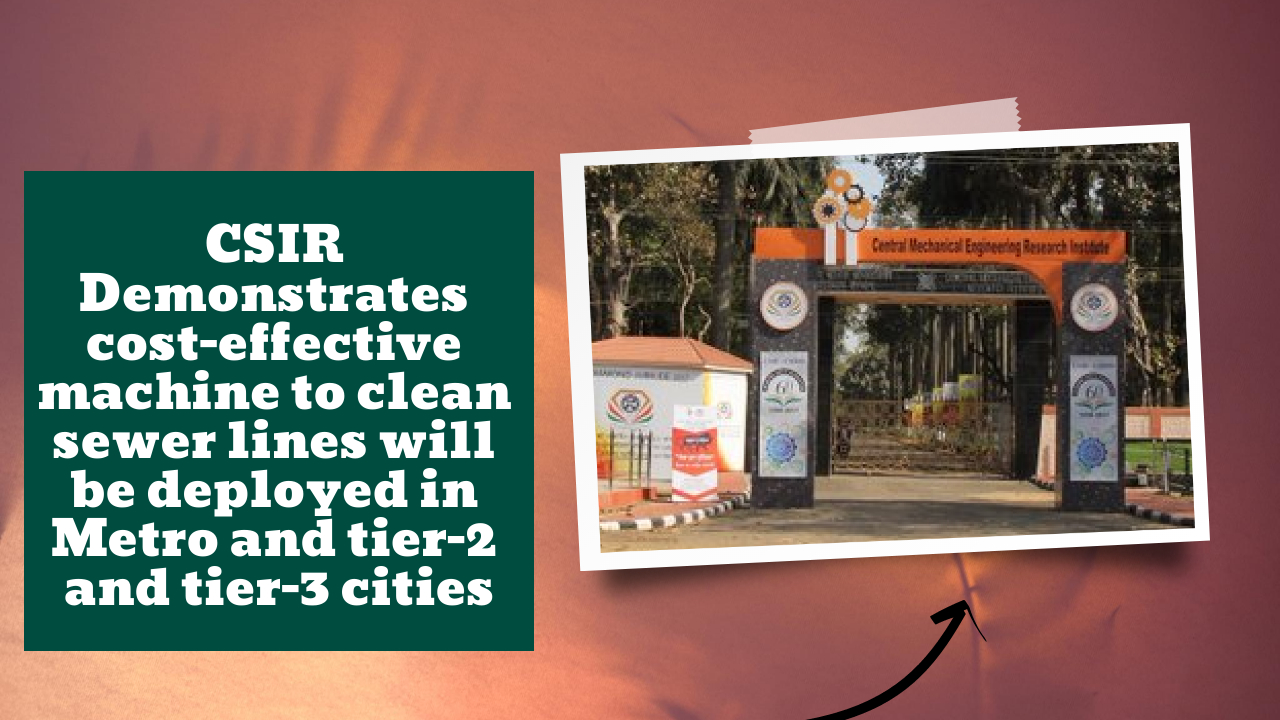The CSIR-CMERI-developed machine can handle a population density of up to 5,000 people, making it ideal for sewer pipes with a diameter of 300 mm and a length of up to 100 meters. Manual scavengers will benefit from increased efficiency and effectiveness and protection from diseases that sneak in unnoticed.
Key Highlight:
- The CSIR-CMERI-developed machine can handle a population density of up to 5,000 people.
- Manual scavengers will benefit from increased efficiency and effectiveness and protection from diseases that sneak in unnoticed.
- The machine is best suited for sewer systems up to 300 mm in diameter and up to 100 meters in length, which means it’s most suited for areas with high population densities.
A demonstration of the indigenous Mechanized Scavenging System was held at the CSIR-National Physical Laboratory, which is part of the Council for Scientific and Industrial Research. Central Mechanical Engineering Research Institute (CMERI) in Durgapur, India, invented the scavenging system.
A metropolis like Delhi would benefit greatly from this gadget. For cities in the second and third tiers, there are variants of the machine that have been developed. Representatives of three Delhi municipal corporations, Delhi Jal Board and Sulabh International were contacted by the DG of CSIR, who suggested that they put this technology to work.
Using an indigenously created mechanized scavenging method to clear garbage such as plastic and other non-biodegradable household throw-away items, Prof Harish Hirani, Director of CMERI, Durgapur discussed the efficiency of this approach.
It was interesting to hear about all of his system innovations, such as employing slurry water for the jetting operation, a self cleaning inspection system, disinfection of the jetting pipe, and so on.
As far as density goes, the CSIR-CMERI machine is best suited for sewer systems up to 300 mm in diameter and up to 100 meters in length, which means it’s most suited for areas with high population densities.
It’s the first of its sort in India, the Ministry of Science & Technology claims, because it’s “benchmarked with the market available system” and has several new features.
With regard to the Swachh Bharat Mission, the scavenging method has shown to be quite cost-effective. Additionally, it will assist in improving the efficiency and effectiveness of the manual scavengers while protecting them from harmful diseases. As a result, scavenging will no longer be considered an inherently degrading job.”
.@CSIR_CMERI develops indigenous Mechanized Scavenging System for Sewerage Maintenance; Cost-effective machine will be deployed in Metro, tier-2 & tier-3 cities.@DrJitendraSingh@IndiaDST@CSIR_IND@PIB_India@PBNS_India@DDNewslive@airnewsalerts
— PIB_Science and Technology (@PIBDST) October 29, 2021
Read:https://t.co/ZD5G9ou5Wp




